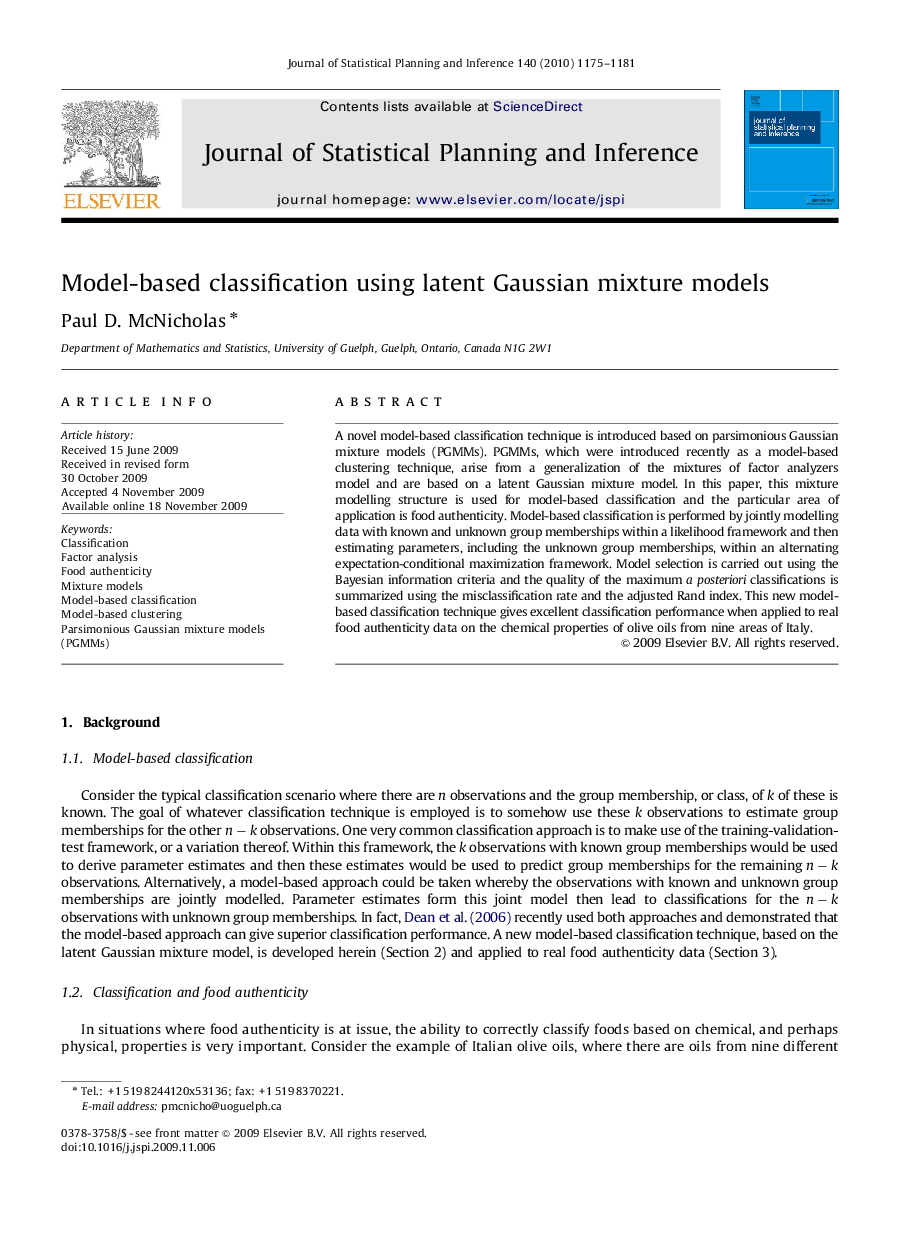| Article ID | Journal | Published Year | Pages | File Type |
|---|---|---|---|---|
| 1150389 | Journal of Statistical Planning and Inference | 2010 | 7 Pages |
A novel model-based classification technique is introduced based on parsimonious Gaussian mixture models (PGMMs). PGMMs, which were introduced recently as a model-based clustering technique, arise from a generalization of the mixtures of factor analyzers model and are based on a latent Gaussian mixture model. In this paper, this mixture modelling structure is used for model-based classification and the particular area of application is food authenticity. Model-based classification is performed by jointly modelling data with known and unknown group memberships within a likelihood framework and then estimating parameters, including the unknown group memberships, within an alternating expectation-conditional maximization framework. Model selection is carried out using the Bayesian information criteria and the quality of the maximum a posteriori classifications is summarized using the misclassification rate and the adjusted Rand index. This new model-based classification technique gives excellent classification performance when applied to real food authenticity data on the chemical properties of olive oils from nine areas of Italy.
